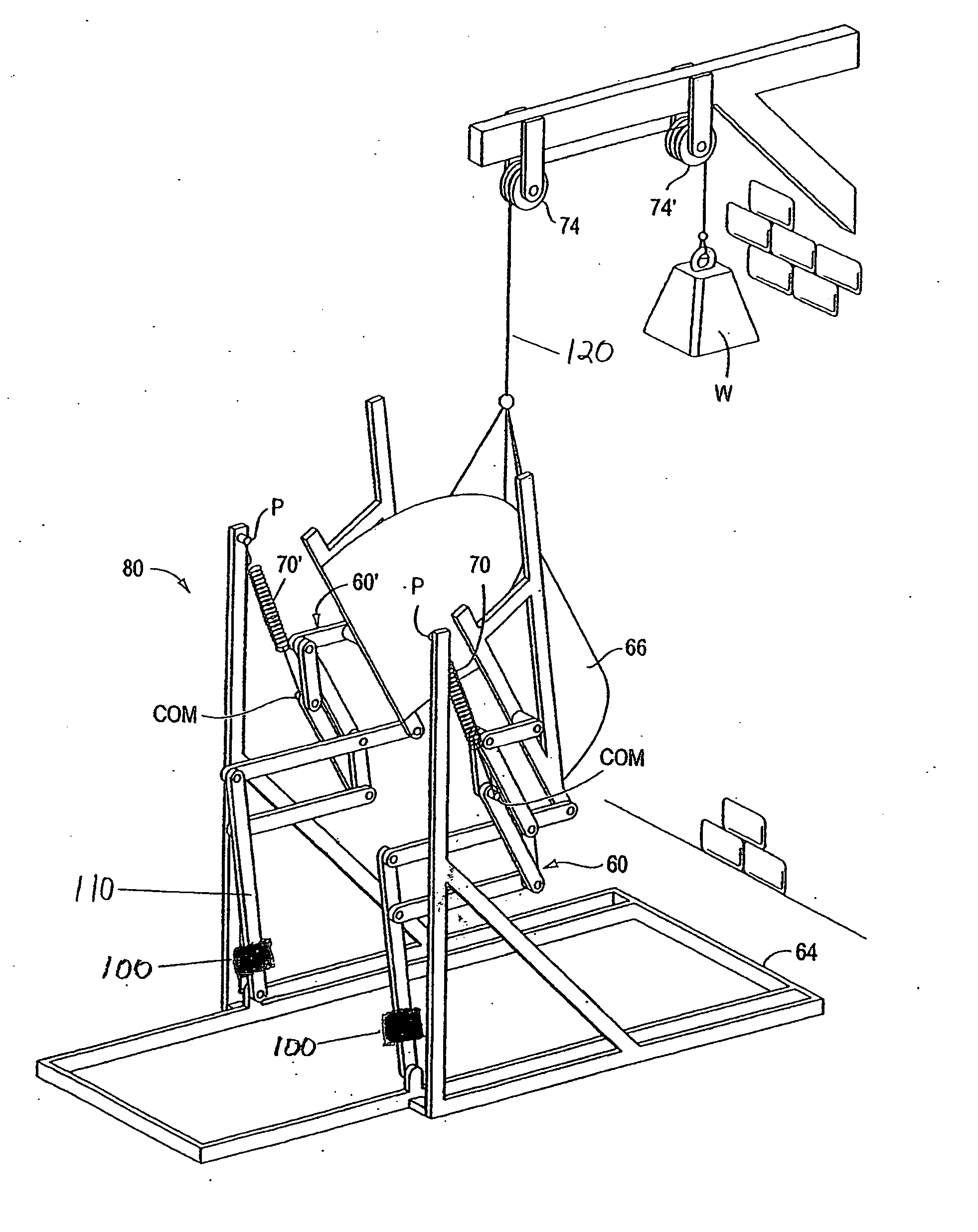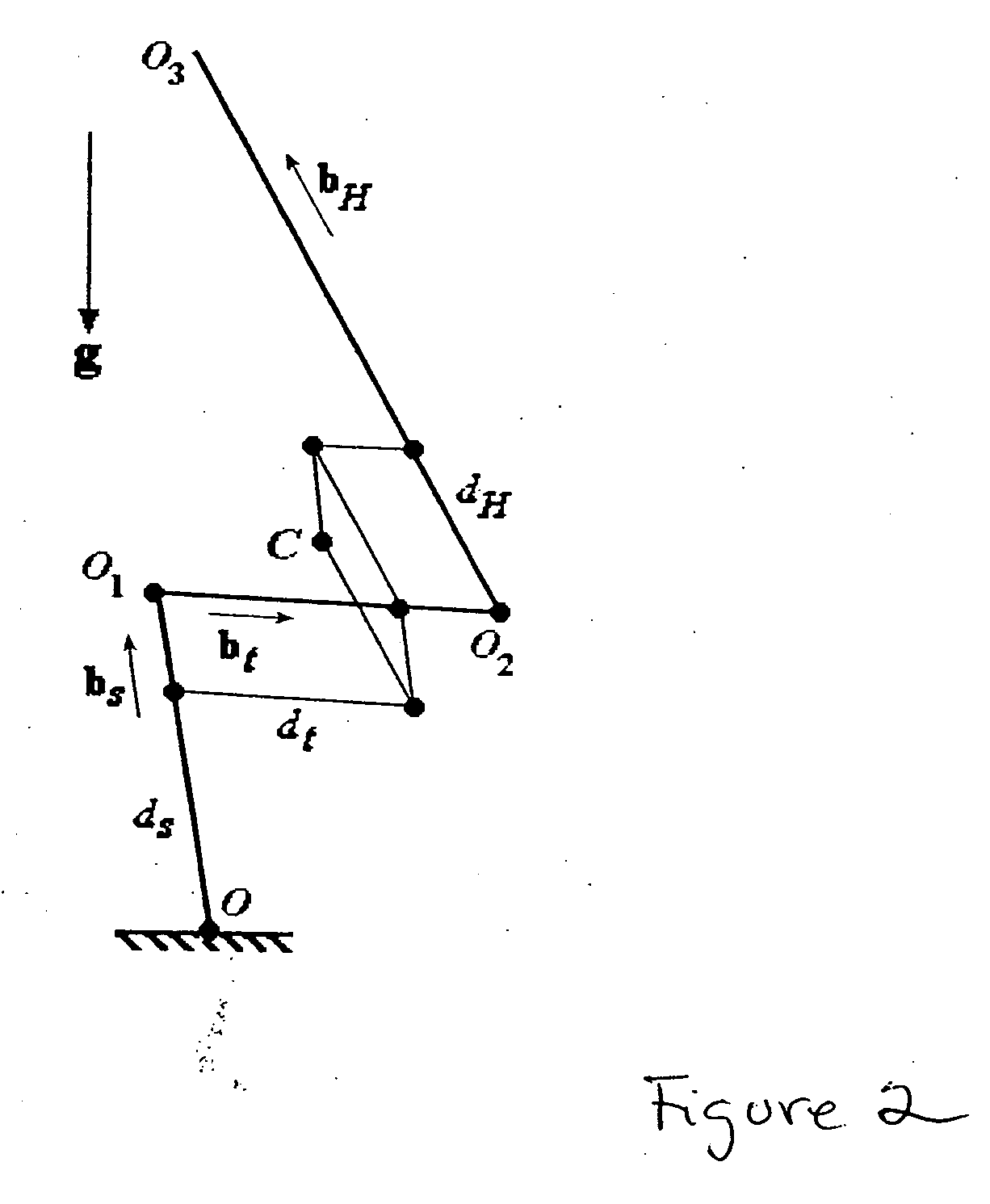Passive gravity-balanced assistive device for sit-to-stand tasks
- Summary
- Abstract
- Description
- Claims
- Application Information
AI Technical Summary
Benefits of technology
Problems solved by technology
Method used
Image
Examples
first embodiment
[0038] Having determined the COM of the system, the spring constants are next determined. FIG. 3 illustrates, schematically, a first embodiment, of a STS device. The human body and the device is gravity-balanced by attaching four springs to the system, one across each of the three parallelograms and one from the COM to the fixed primary supporting point P as shown in FIG. 3. The total potential energy of the system consists of gravitational (Vg) and elastic (Vs) energies due to the springs. Its expression is given by:
V=Vs+Vg=(½)kx2+(½)k1x12+(½)k2x22+(½)k3x32−Mg∘roc.
Upon substitution of
x2=∥PC∥·∥PC∥,
x12=∥O1S1∥·∥O1S1∥,
x22=∥CS3∥·∥CS3∥ and
x32=∥O2S2∥·∥O2S2∥
and expanding the results thus obtained in terms of joint angles, one obtains:
−Mg∘roc=Mg(dssa+dtsak+dHSakh)
x2=(dsca+dtcak+dHcakh)2+(dssa+dtsak+dHsakh−d)2
x12=dt2+(ls−ds)2−2(ls−ds)dtck
x22=dH2+(ls−ds)2−2dH(ls−ds)ckh
x32=(lt—dt)2+dH2−2dH(lt−dt)ch.
Here, ci, si, cij, sij, cijk and sijk stand for cos θi, sin θi, cos (θi+θj), sin (...
second embodiment
[0040]FIG. 4 shows a schematic representation of an apparatus (80) according to this invention, which allows the use of springs with smaller stiffness constants The apparatus comprises two sets of articulated members 60 and 60′, each set forming three parallelograms on the left and right sides, corresponding to the three parallelograms in FIG. 3. The system of articulated support members serves as an exoskeleton and is mounted on a frame 64. The frame and the members may be fabricated out of a material with relatively low density and high intrinsic stiffness in order to reduce the weight of the device and provide for its easy adjustment. Exemplary materials include extruded aluminum, titanium, carbon reinforced fibers, Kevlar reinforced fibers, and reinforced glass fibers.
[0041] The length of each articulated member may be adjusted and optimized for the user, using, for example, telescoping members. The primary springs 70 and 70′ connect the centers of mass COM to the frame at the f...
PUM
 Login to View More
Login to View More Abstract
Description
Claims
Application Information
 Login to View More
Login to View More - R&D
- Intellectual Property
- Life Sciences
- Materials
- Tech Scout
- Unparalleled Data Quality
- Higher Quality Content
- 60% Fewer Hallucinations
Browse by: Latest US Patents, China's latest patents, Technical Efficacy Thesaurus, Application Domain, Technology Topic, Popular Technical Reports.
© 2025 PatSnap. All rights reserved.Legal|Privacy policy|Modern Slavery Act Transparency Statement|Sitemap|About US| Contact US: help@patsnap.com



